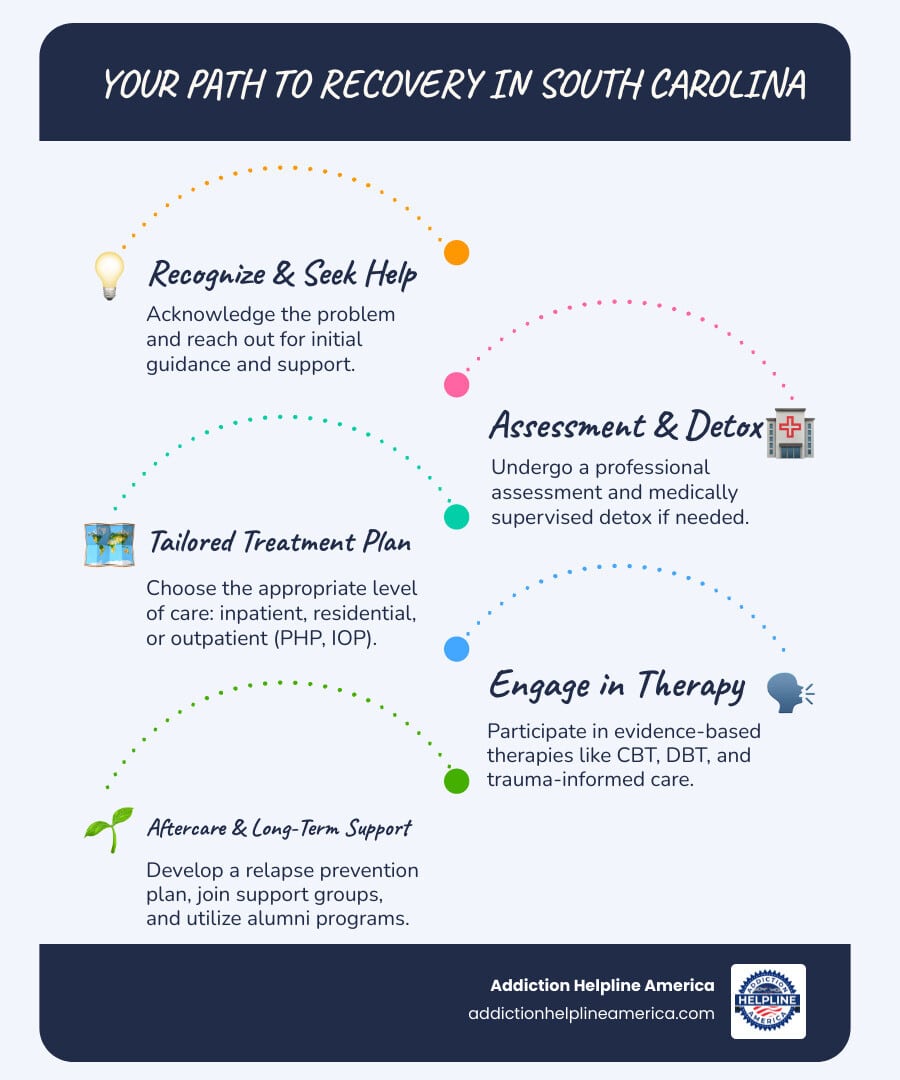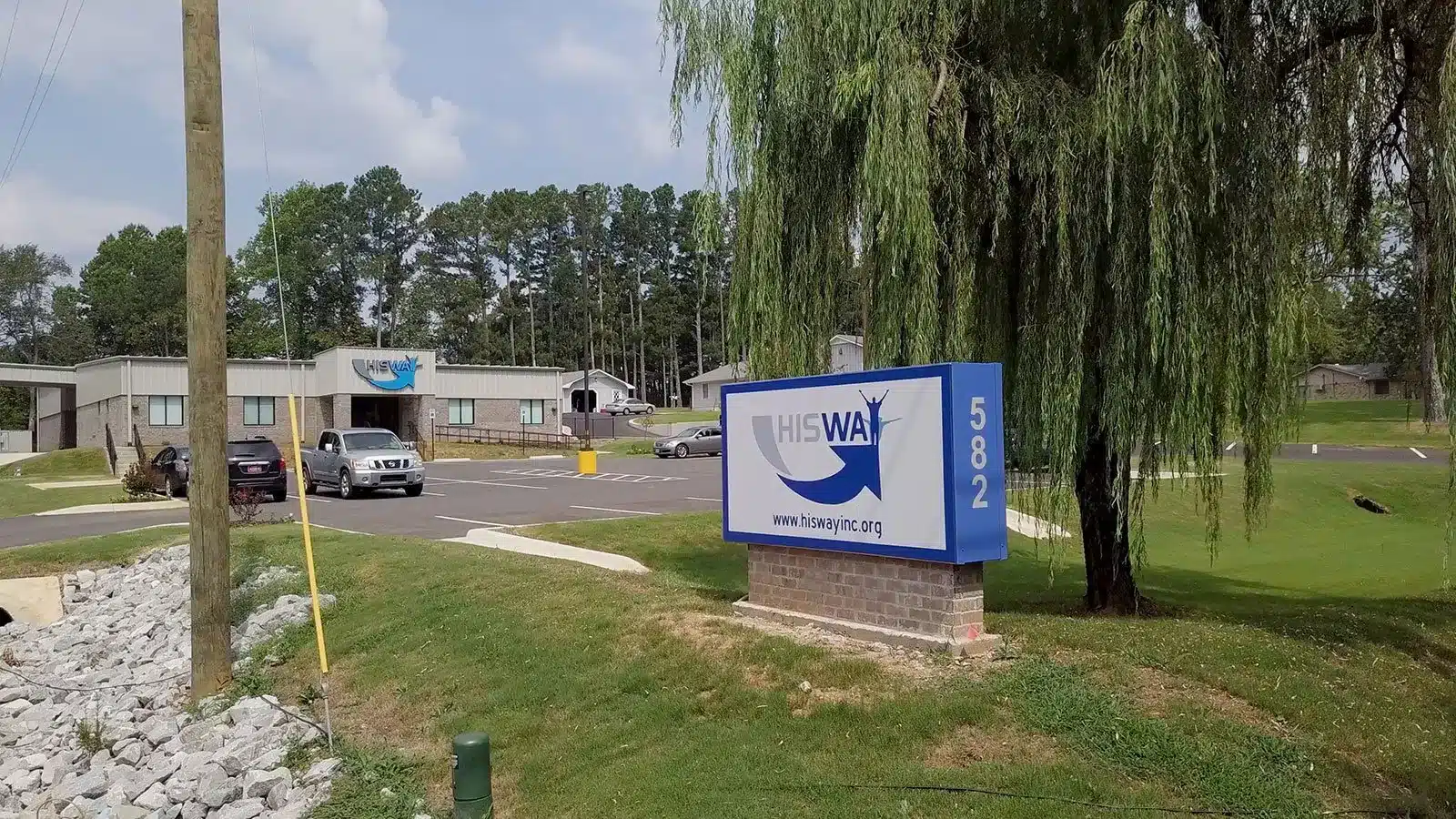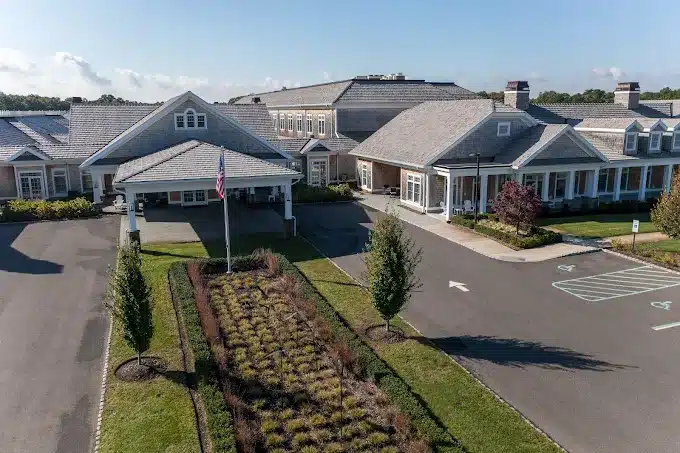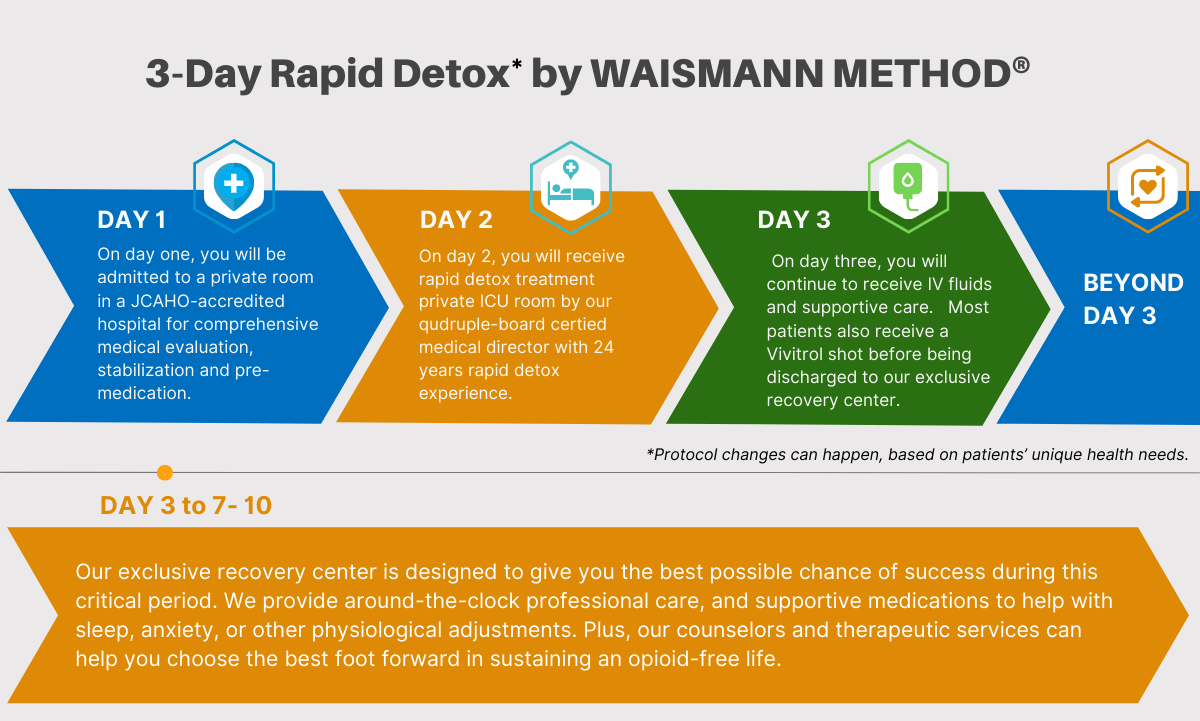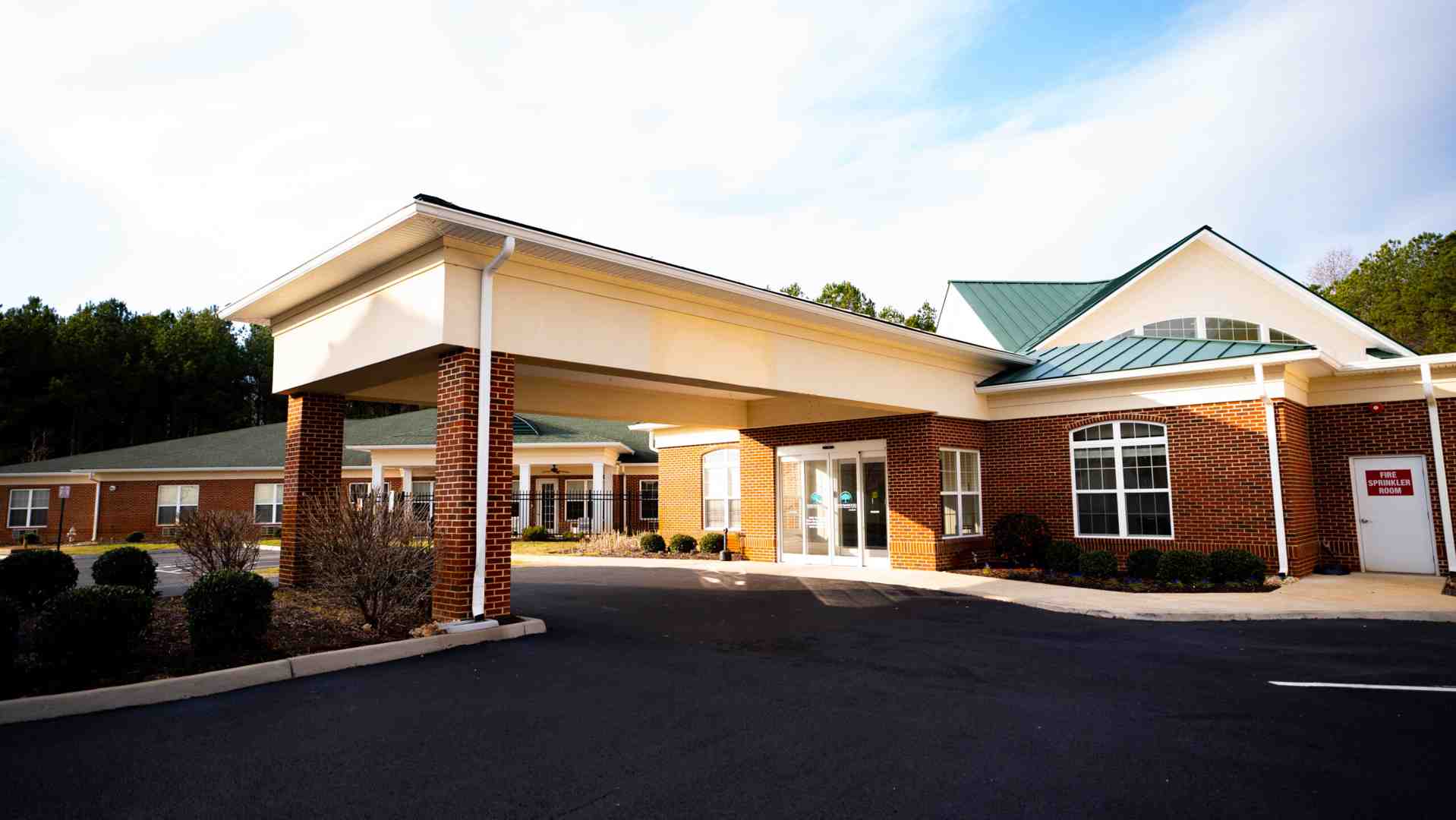
Understanding Intervention Services: A Lifeline for Families in Crisis
When a loved one is trapped in addiction, it’s easy to feel desperate. You may have tried pleading or reasoning, only to watch them sink deeper. Intervention services exist for this exact moment, changing your concern into a structured meeting that cuts through denial and offers a clear path to treatment.
An intervention is a compassionate, evidence-based process led by a professional. It’s not about forcing someone into rehab out of anger; it’s about addressing addiction as a disease that affects the entire family. A certified interventionist provides:
- Professional guidance to plan and facilitate the meeting.
- A structured conversation to communicate lovingly but firmly.
- Immediate treatment placement with pre-arranged options.
- Family education to break cycles of enabling and codependency.
- Follow-up support for everyone’s recovery journey.
Professionally led interventions are highly effective, with over 90% resulting in the loved one accepting treatment. More importantly, they are 100% successful in helping families set healthy boundaries and begin their own healing.
At Addiction Helpline America, we connect families with certified intervention professionals and treatment programs nationwide. We know that intervention services don’t just save lives—they restore hope and rebuild families.
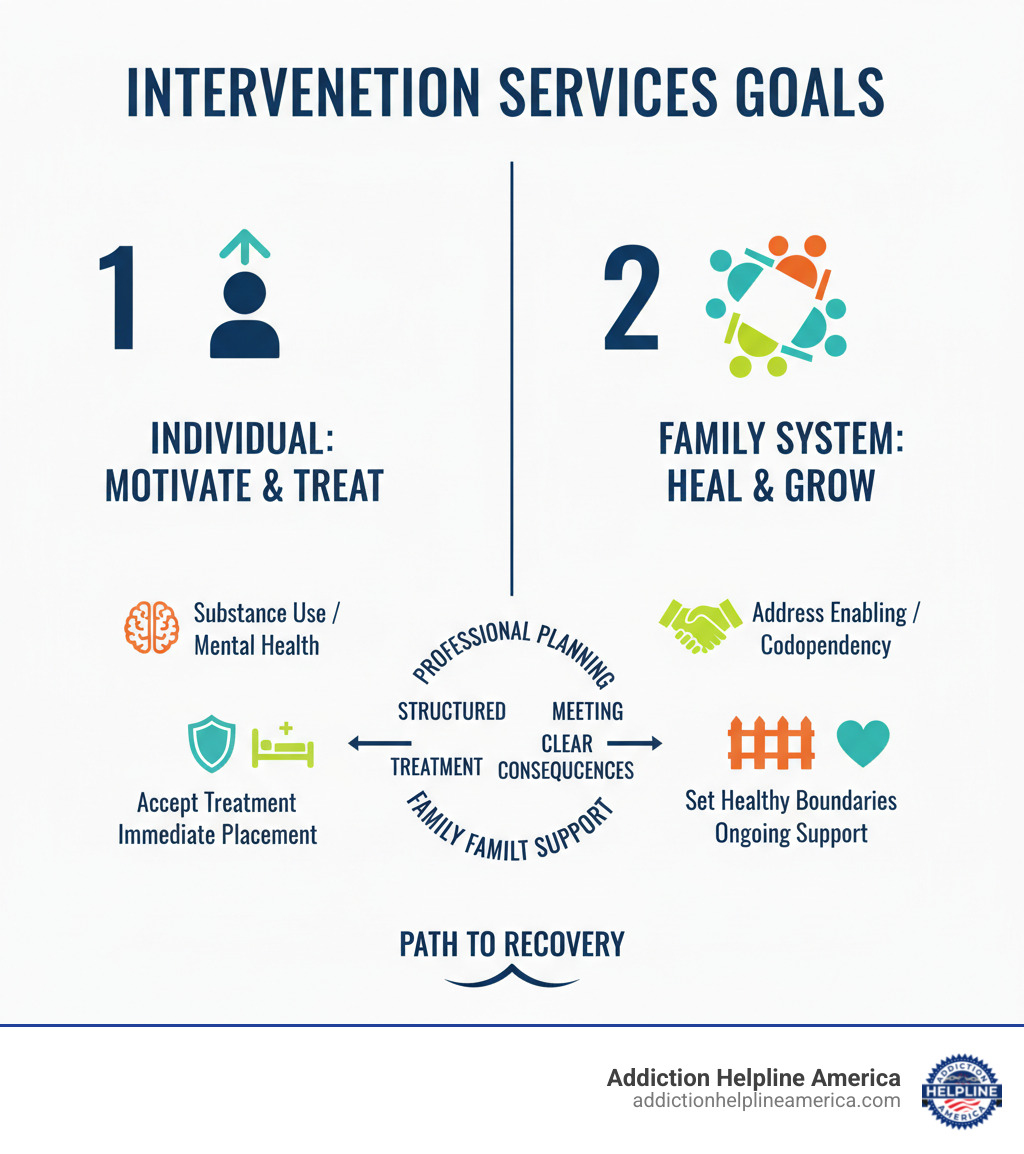
This infographic illustrates the dual goals of intervention services: (1) Motivating the individual to accept immediate treatment for their substance use or mental health disorder, and (2) Educating and healing the entire family system by addressing enabling behaviors, codependency, and establishing healthy boundaries. The process includes professional planning, a structured team meeting, presentation of treatment options, clear consequences, and ongoing family support regardless of the loved one’s initial decision.
Why and When to Consider an Intervention
Watching a loved one struggle with addiction is painful. You may have tried everything, and perhaps you’ve heard the myth that you should wait for them to “hit rock bottom.” This is dangerous advice. For many, rock bottom is irreversible harm or even death. Intervention services exist so you don’t have to wait for a catastrophe.
When should you consider an intervention? When the addiction is causing clear harm. Look for these signs:
- Behavioral changes: Secretiveness, irritability, or social withdrawal.
- Neglecting responsibilities: Missing work, unpaid bills, or failing to care for family.
- Health deterioration: Significant weight changes, poor hygiene, or untreated health issues.
- Legal or financial problems: DUIs, job loss, or unexplained missing money.
- Strained relationships: Growing distance and conflict within the family.
If you see these signs, it’s time to act. Research shows that 95% of professionally led family interventions result in the loved one accepting treatment within three weeks. Even if they initially refuse, the process is 100% successful in helping families heal by teaching you to set healthy boundaries and stop enabling.

The Benefits of Professional Guidance
Love alone isn’t enough to conduct a successful intervention. Without professional guidance, these meetings can backfire, leading to anger and resentment. A professional interventionist is essential because they provide:
- Expertise in addiction: They understand addiction as a brain disease and can see through denial and manipulation.
- Neutral facilitation: As an objective third party, they keep the conversation from being hijacked by emotion, redirecting anger or grief back to the plan.
- De-escalation skills: They are trained to handle intense reactions—rage, tears, bargaining—without losing control of the meeting.
- Immediate treatment placement: Professionals have networks to find programs that fit your needs, insurance, and have immediate availability. They can arrange transport, closing the window where a person might change their mind.
- Family education: They teach you to recognize enabling behaviors and codependency, empowering you to make lasting changes.
The numbers are clear: interventions with trained professionals succeed over 90% of the time. At Addiction Helpline America, we connect families with certified professionals who can guide you through this critical moment.
Who Should Be on the Intervention Team?
The right team is crucial for success. An ideal intervention team includes four to six people your loved one respects and cares about.
Who to include:
- Close family members: Spouses, parents, adult children, and siblings.
- Respected friends: Long-time friends whose words carry weight.
- Clergy or spiritual advisors: Trusted figures who can offer moral support.
- The professional interventionist: The guide for the entire process.
Who to exclude:
- Anyone your loved one actively dislikes.
- Family or friends with their own untreated addiction or mental health issues.
- Anyone who cannot control their emotions or stick to the plan.
If a key person is too emotional to participate directly, they can write a letter to be read by someone else. The goal is to create a united, loving, and firm front with no mixed messages. Building the right team is a critical step that dramatically increases your chances of success.
The 5-Step Intervention Process: A Detailed Walkthrough
Planning an intervention can feel overwhelming, but a structured, five-step approach makes it manageable. Professional intervention services follow this proven framework to guide families from the decision to act through the beginning of recovery.

Step 1: Make a Plan and Form a Team
Thoughtful preparation is the foundation of a successful intervention. Your first and most important move is to consult a professional interventionist. They will help you form a team of 4-6 people your loved one respects, set a strategic date and location, and gather information about the addiction. A critical part of this step is researching and preparing at least three viable types of treatment programs with your interventionist’s help, ensuring you can act immediately when your loved one says yes.
Step 2: Prepare What to Say
To keep the meeting constructive, each team member should write a personal letter. This helps organize thoughts and emotions ahead of time. The key is to:
- Use “I” statements to focus on your feelings, not accusations (e.g., “I feel scared” instead of “You are scaring me”).
- Share specific, factual examples of how the addiction has impacted you.
- Maintain a loving and concerned tone, avoiding anger or judgment.
Rehearsing the meeting with your interventionist builds confidence and ensures the message is delivered effectively.
Step 3: Hold the Intervention Meeting
On the day of the intervention, your loved one is invited to the location without knowing the specific reason, to ensure they attend. Once assembled, each team member reads their prepared letter, presenting a powerful, united front. The interventionist facilitates the meeting, managing emotional reactions and keeping the conversation focused. After everyone has spoken, you will present the pre-arranged treatment options, explaining that everything is ready for them to go immediately.
Step 4: Present Consequences and Ask for a Decision
This step provides the motivation for change. The team must clearly and calmly explain the new boundaries that will be enforced if the loved one refuses treatment. These are not threats, but necessary limits to stop enabling the addiction. Consequences might include no longer providing financial support or asking them to move out. They must be realistic and something you are all prepared to enforce. Finally, you must ask for an immediate decision: “Will you accept this help today?” Delays almost always lead to continued substance use.
Step 5: Follow Through and Support Recovery
The intervention is the beginning of a new chapter for everyone.
- If they accept treatment: Move quickly. The interventionist will have logistics prepared for immediate transport to the facility. This urgency is crucial to prevent second thoughts.
- If they refuse help: You must enforce the consequences you outlined. This is difficult but necessary to stop enabling destructive behavior. It demonstrates that your boundaries are real.
Regardless of the outcome, family therapy and support groups like Al-Anon are essential. The intervention process often uncovers dysfunctional family dynamics that need healing. For families facing co-occurring disorders, resources like our guide on interventions for co-occurring anxiety and depression can offer further help. At Addiction Helpline America, we support you through every step of this journey.
Exploring Different Types of Intervention Services
There is no one-size-fits-all approach to intervention. The best model depends on your family’s dynamics, your loved one’s personality, and the nature of the addiction. Understanding the different types of intervention services helps you make an informed choice.

Common Models of Intervention Services
Addiction specialists have developed several effective models:
The Johnson Model: This is the classic, direct approach involving a surprise meeting. The team confronts the loved one with care, sharing how the addiction has affected them and presenting a pre-arranged treatment plan. It is effective for individuals in deep denial.
The ARISE Model: This is a gentler, invitational approach. There is no surprise; the individual is invited to join the process from the beginning. It unfolds over a series of collaborative meetings and is ideal for families who prefer to avoid confrontation.
The Family Systems Model: This model treats the entire family, not just the individual with the addiction. It addresses the codependency, enabling, and dysfunctional communication patterns that have developed, often involving therapy for multiple family members.
Crisis Intervention: This is not a planned event but an immediate response to a dangerous situation, such as an overdose or threat of self-harm. The goal is immediate safety and stabilization, often involving emergency services, as described by resources like Prevention & Intervention Services | York County, PA.
| Intervention Model | Approach | Family Involvement | Structure |
|---|---|---|---|
| Johnson Model | Direct, confrontational (but caring) | High, family prepares statements | Surprise meeting, loved one confronted by team |
| ARISE Model | Invitational, gradual, collaborative | High, family is primary motivator | Three levels, starts with family meetings, then invites loved one |
| Family Systems Model | Addresses entire family dynamics | Very High, treats multiple members | Focuses on codependency and family roles, often involves therapy for all |
| Crisis Intervention | Immediate, spontaneous | Varies, can be individual or group | On-the-spot during dangerous situations, short-term coping tools |
Other Intervention Approaches
Beyond formal models, a simple intervention may involve one person having a heartfelt conversation. Another method is the “Love First” approach, which emphasizes empathy and connection to motivate change. Regardless of the method, professional guidance is the common thread in successful interventions. A trained interventionist brings objectivity and skill to a highly emotional situation.
Addiction Helpline America can connect you with a certified intervention specialist trained in various models, including specialists like those at Dallas Taylor Interventions Los Angeles CA. We’ll help you find the right fit for your family.
The Family’s Role and Common Challenges
Addiction is often called a family disease because it reshapes the entire family system. You may find yourself constantly anxious, walking on eggshells, and neglecting your own needs. A challenge is distinguishing between helping and enabling. Helping is doing something for someone they cannot do for themselves; enabling is protecting them from the consequences of their actions, such as making excuses for them or paying their bills.
Over time, codependency can develop, where your identity becomes wrapped up in managing their addiction. The emotional toll of fear, anger, and guilt can be staggering, which is why professional intervention services are so crucial.

Navigating Family Dynamics
A successful intervention begins the healing process for everyone. It forces the family to examine dysfunctional roles—like the “enabler,” the “hero,” or the “scapegoat”—that may have developed. Learning to set healthy boundaries is one of the most important skills. This means saying “no” and prioritizing your own well-being, which is essential for everyone’s recovery.
Most importantly, understand that your recovery doesn’t depend on theirs. Whether or not your loved one accepts help, you can and should begin your own healing through therapy and support groups like Al-Anon or Nar-Anon. Resources like the Minnesota Recovery Connection offer support specifically for families.
Overcoming Common Obstacles
Families often face several roadblocks when considering an intervention:
- Denial: It’s not just the addict’s problem. Family members may minimize the situation, fearing change.
- Fear of conflict: Worrying that the intervention will make things worse can lead to paralysis. A trained interventionist is skilled at managing conflict.
- Financial concerns: The cost of intervention and treatment can feel overwhelming. Addiction Helpline America works with you to find affordable options that fit your insurance and financial situation.
What if the intervention “fails” and your loved one refuses help? It’s not a failure. The family has learned to stop enabling and has set boundaries. This shift is a success in itself. The most critical step is to follow through with the consequences. This is how you demonstrate that the family is serious about change. Keep the door open for treatment, but continue your own healing journey. Many who initially refuse help eventually seek it once they experience the real-world consequences of their addiction. Our Drug Intervention Delaware Complete Guide provides more state-specific information.
Frequently Asked Questions about Intervention Services
What is the success rate of a professional intervention?
Intervention services have two key measures of success. First, when guided by a professional, over 90% of interventions result in the person accepting treatment. Second, and just as important, interventions are 100% successful in helping the family heal. The process empowers you to set healthy boundaries, stop enabling, and begin your own recovery, regardless of your loved one’s immediate decision. This shift breaks the cycle of addiction within the family system.
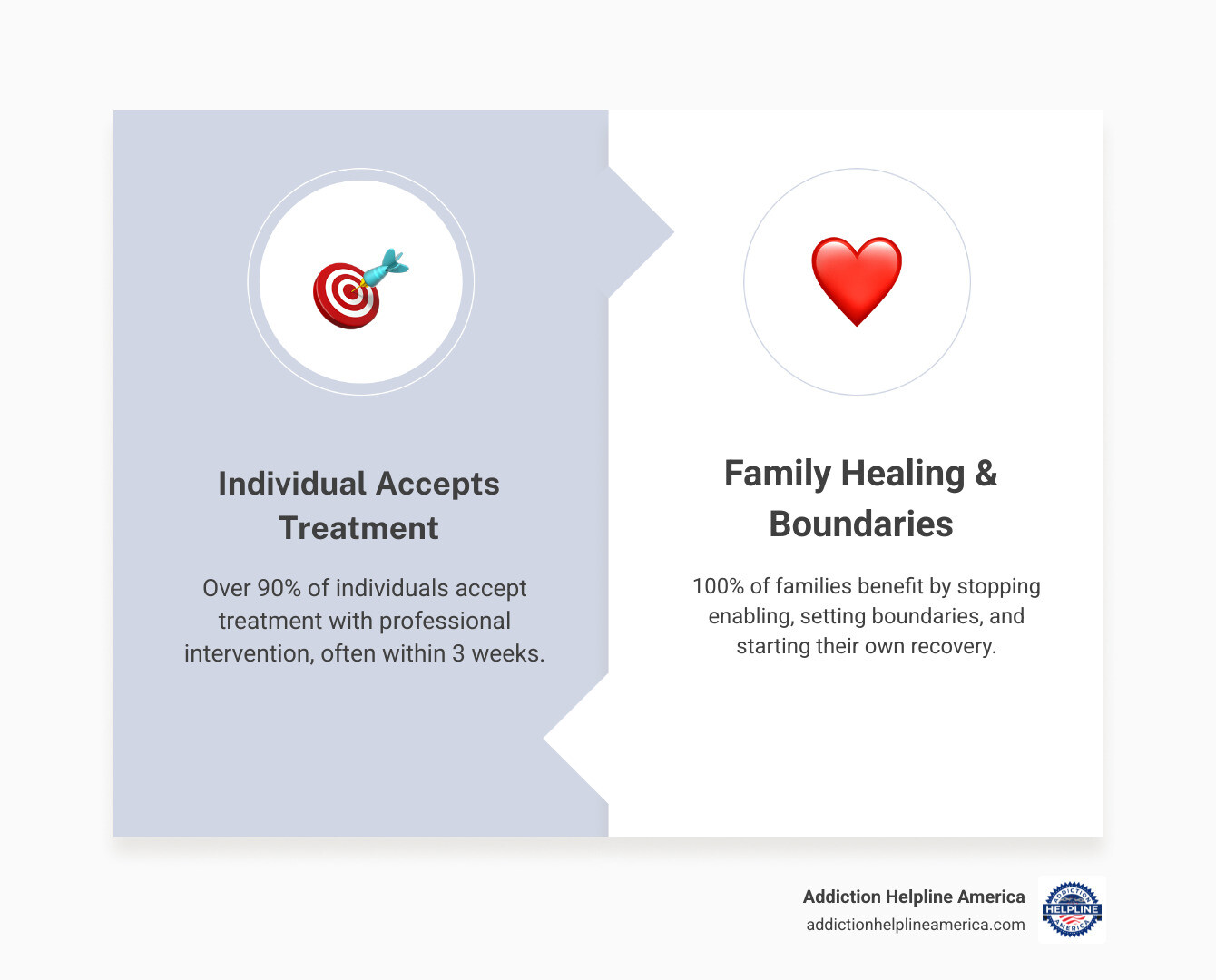
This infographic illustrates the dual success metrics of intervention services: a high rate (over 90%) of individuals accepting treatment with professional involvement, and a 100% success rate in empowering families to establish healthy boundaries and begin their own healing process, regardless of the loved one’s initial decision.
How are intervention services different from other addiction treatments?
An intervention is not treatment itself; it is the critical first step that motivates someone to enter treatment. Think of it as the key that open ups the door to recovery. Its sole purpose is to break through denial and get a person to accept help. Once they agree, they move into the actual continuum of care, which may include detox, inpatient or outpatient rehab, and aftercare. Addiction Helpline America connects families to both interventionists and the full spectrum of treatment programs that follow.
What should I do if my loved one refuses help?
This is a painful outcome, but it is not the end of the road. It is vital that you:
- Stay calm and do not argue. Your interventionist will help you end the meeting with a firm but loving stance.
- Enforce the consequences. This is the hardest but most important step. You must follow through on the boundaries you set, such as cutting off financial support. This is not punishment; it is refusing to enable the addiction.
- Begin your own healing. Your recovery cannot wait for theirs. Seek individual or family counseling and attend support groups like Al-Anon. You need support to process the trauma of living with addiction.
- Keep the door open. Let your loved one know that you love them and that treatment is an option when they are ready. Often, experiencing the full consequences of their actions is what finally motivates them to seek help.
Your Path to Recovery Starts with a Single Step
Deciding to pursue intervention services is a courageous act of love. It’s a declaration that you refuse to give up on a better life for your loved one and your entire family. While the process can feel daunting, you don’t have to steer it alone.
Professional guidance is the key to changing helplessness into action. A trained interventionist provides the structure and experience needed to steer this emotional process, giving your family the best chance at success. The intervention begins the healing process for everyone by teaching you to set boundaries and break the cycle of addiction.
At Addiction Helpline America, we understand what you’re going through. We provide free, confidential guidance to connect you with a nationwide network of certified interventionists and the right treatment program for your loved one. We’re here to answer your questions and stand with you as you take this brave step.
Your family deserves peace, and your loved one deserves a chance at recovery. Reach out to us today, and let’s begin this journey together.
Our helpline is 100%
free & confidential
If you or someone you care about is struggling with drug or alcohol addiction, we can help you explore your recovery options. Don’t face this challenge alone—seek support from us.
Programs
Resources
Will my insurance
cover addiction
treatment?
We're ready to help
Find the best
drug or alcohol treatment
center
Are you or a loved one struggling with addiction? Call today to speak to a treatment expert.

